Zone
Crash of a Cessna 401 in Henderson: 2 killed
Date & Time:
Nov 6, 1986 at 0144 LT
Registration:
N3219Q
Survivors:
No
Schedule:
Las Vegas – Albuquerque
MSN:
401-0019
YOM:
1967
Crew on board:
1
Crew fatalities:
Pax on board:
1
Pax fatalities:
Other fatalities:
Total fatalities:
2
Captain / Total hours on type:
17.00
Aircraft flight hours:
5083
Circumstances:
Approximately 5 1/2 minutes after departure and while the aircraft was climbing enroute, an unknown ignition source triggered an explosion of fuel/air vapor which existed within the interior of the left wing. Wing skin from the upper/lower wing surface was lost, however, the wing structure remained integral and the pilots continued to fly the aircraft executing a 180° course reversal back to McCarran-Intl Airport. Subsequent to the explosion a fire developed within the left engine area. As the aircraft continued back towards mccarran the airspeed gradually diminished and the landing gear were lowered. Shortly thereafter the left wing entered a stall condition brought about by a decrease of airspeed as well as the degradation of its lift developing capabilities due to the explosion induced damage. The aircraft then entered an uncontrollable left roll several hundred feet above ground from which a successful recovery could not be executed. Both occupants were killed.
Probable cause:
Occurrence #1: explosion
Phase of operation: climb - to cruise
Findings
1. (c) fluid, fuel - fumes
2. (f) wing - exploded
----------
Occurrence #2: fire
Phase of operation: maneuvering - turn to reverse direction
Findings
3. (c) engine assembly - fire
----------
Occurrence #3: loss of control - in flight
Phase of operation: descent - emergency
Findings
4. (c) airspeed - inadequate - pilot in command
5. (f) anxiety/apprehension - pilot in command
6. (f) gear extension - premature - pilot in command
----------
Occurrence #4: in flight collision with terrain/water
Phase of operation: descent - uncontrolled
Findings
7. (f) remedial action - not possible - pilot in command
Phase of operation: climb - to cruise
Findings
1. (c) fluid, fuel - fumes
2. (f) wing - exploded
----------
Occurrence #2: fire
Phase of operation: maneuvering - turn to reverse direction
Findings
3. (c) engine assembly - fire
----------
Occurrence #3: loss of control - in flight
Phase of operation: descent - emergency
Findings
4. (c) airspeed - inadequate - pilot in command
5. (f) anxiety/apprehension - pilot in command
6. (f) gear extension - premature - pilot in command
----------
Occurrence #4: in flight collision with terrain/water
Phase of operation: descent - uncontrolled
Findings
7. (f) remedial action - not possible - pilot in command
Final Report:
Crash of a Boeing 727-235 in New Orleans: 153 killed
Date & Time:
Jul 9, 1982 at 1608 LT
Registration:
N4737
Survivors:
No
Schedule:
Miami - New Orleans - Las Vegas - San Francisco - San Diego
MSN:
19457
YOM:
1968
Flight number:
PA759
Crew on board:
7
Crew fatalities:
Pax on board:
138
Pax fatalities:
Other fatalities:
Total fatalities:
153
Captain / Total hours on type:
10595.00
Copilot / Total hours on type:
3914
Aircraft flight hours:
39253
Aircraft flight cycles:
35643
Circumstances:
Pan Am Flight 759 was a scheduled flight from Miami (MIA) to Las Vegas (LAS), with an en route stop at New Or1eans (MSY). At 15:58:48 Boeing 727 "Clipper Defiance" taxied from its gate at the New Orleans International Airport. Before leaving the gate, the flightcrew had received ATIS message Foxtrot which read in part "....time one eight five five Zulu, weather, two thousand five hundred scattered, two five thousand thin broken, visibility six miles in haze, temperature niner zero, wind two four zero at two, winds are calm altimeter three zero zero one...". The flightcrew requested runway 10 for the takeoff and ground control cleared the flight to taxi to runway 10. At 15:59:03, the first officer requested a wind check. Winds were 040 degrees at 8 knots. At 16:02:34, while Flight 759 was taxiing to runway 10, the crew heard a transmission from ground control, advising another airplane of low level wind shear alerts in the northeast quadrants of the airport. At 16:03:33, the first officer requested another wind check. Ground control replied, "Wind now zero seven zero degrees at one seven... peak gusts two three, and we have low level wind shear alerts all quadrants, appears to be a frontal passing overhead right now, we're right in the middle of everything." The captain then advised the first officer to "...let your airspeed build up on takeoff..." and said that they would turn off the air conditioning packs for the takeoff, which would enable them to increase the EPR's on engines Nos. 1 and 3 to 1.92. The flightcrew completed the takeoff and departure briefings and turned onto the active runway for takeoff. At l6:06:22, Flight 759 informed the tower that it was ready for takeoff. The local controller cleared the flight for takeoff, and the first officer acknowledged the clearance. About 16:07:57, the Boeing 727 began its takeoff. According to witnesses, the airplane lifted off about 7,000 feet down runway 10, climbed in a wings-level attitude, reached an altitude of about 100 feet to 150 feet above the ground (AGL), and then began to descend towards trees. The airplane crashed into a residential area and was destroyed during the impact, explosion, and subsequent ground fire. Eight persons on the ground were killed.
Probable cause:
The airplane's encounter during the lift-off and initial climb phase of flight with a micro-burst induced windshear which imposed a downdraft and a decreasing headwind, the effects of which the pilot would have had difficulty recognizing and reacting to in time for the airplane's descent to be arrested before its impact with trees. Contributing to the accident was the limited capability of current ground based low level windshear detection technology to provide definitive guidance for controllers and pilots for use in avoiding low level wind shear encounters.
Final Report:



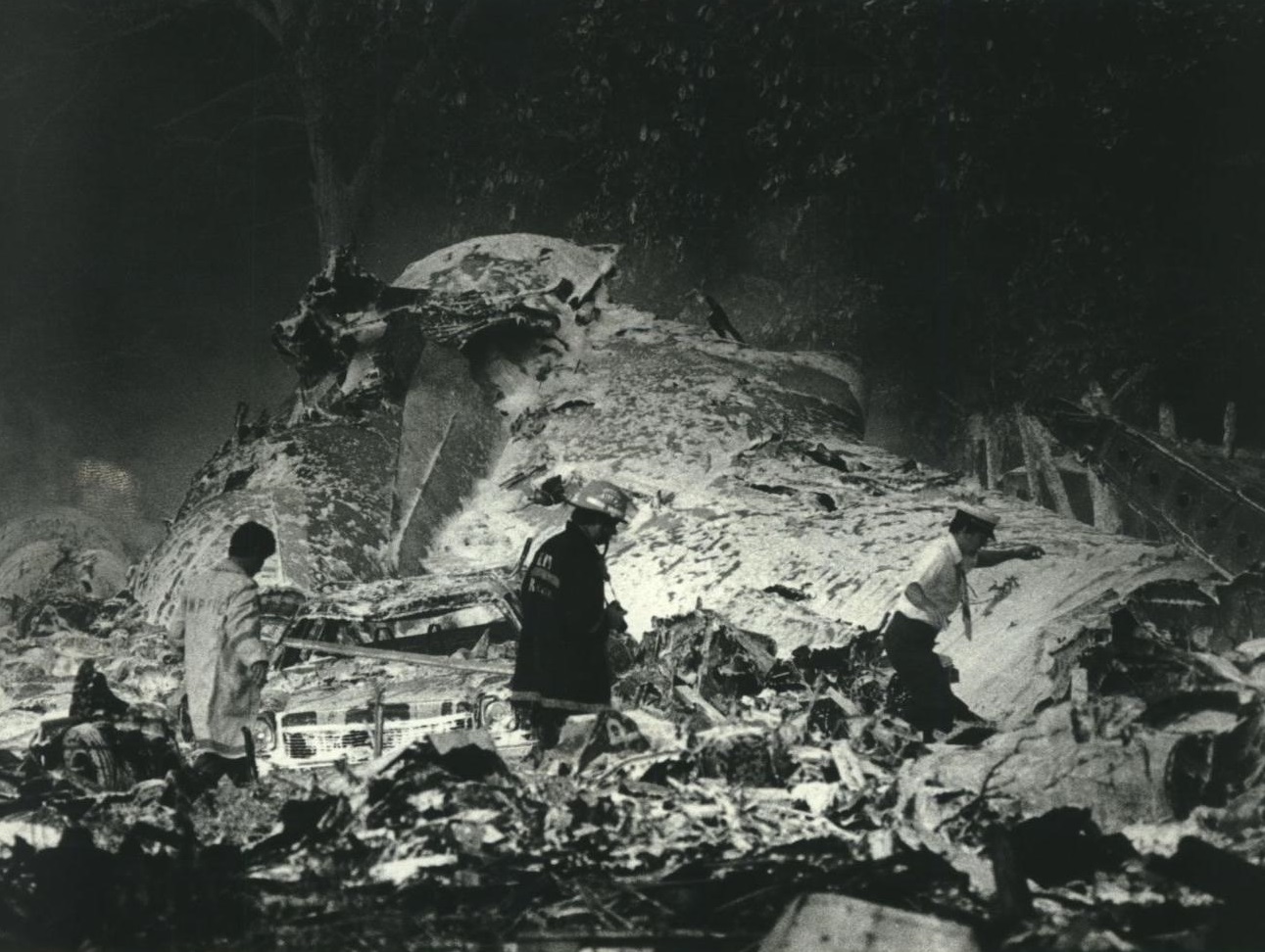
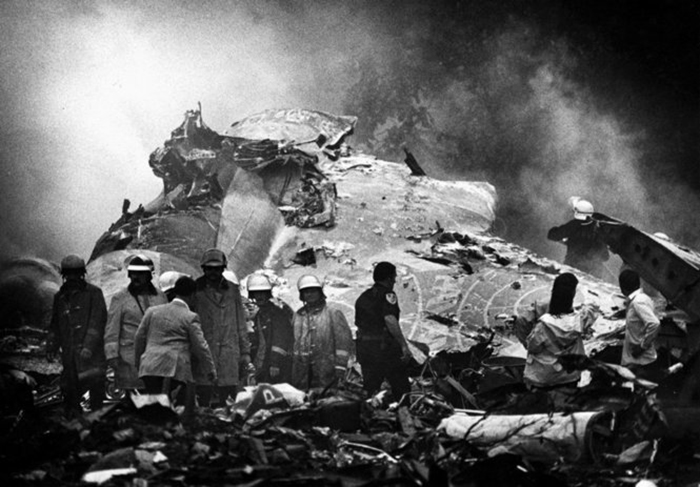


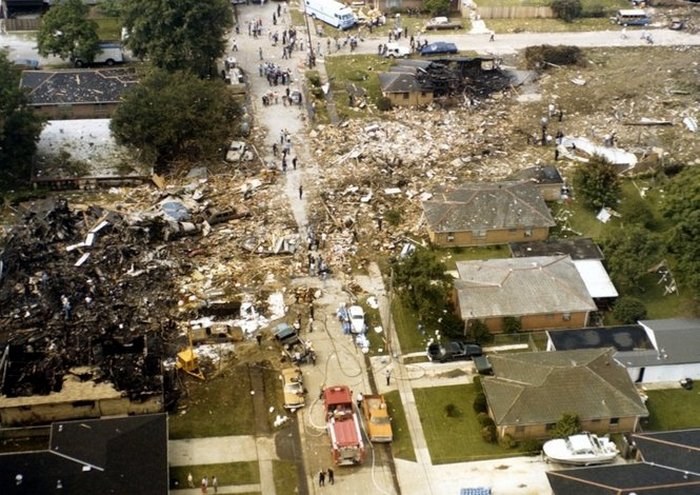

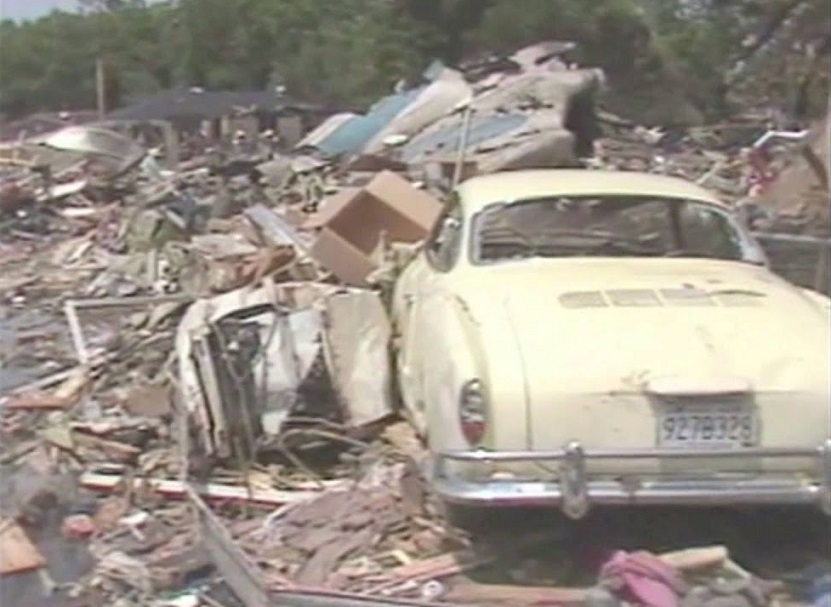

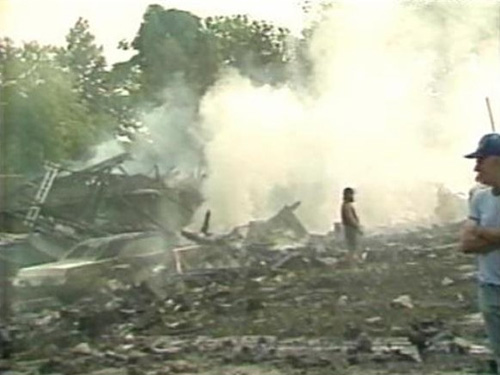
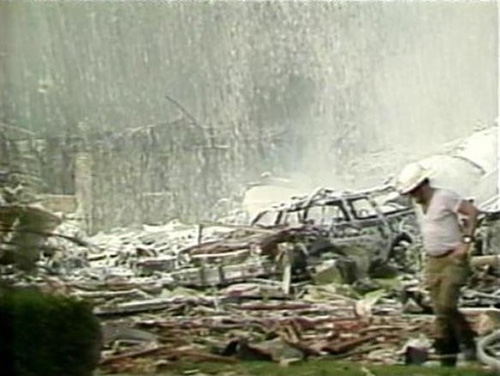
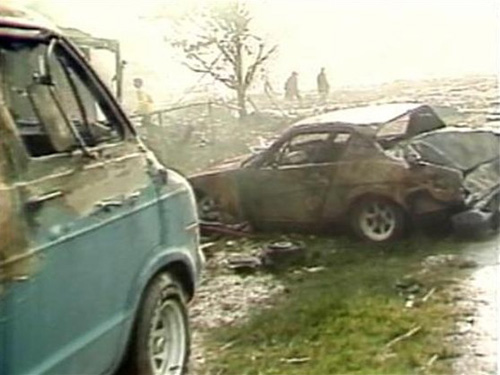
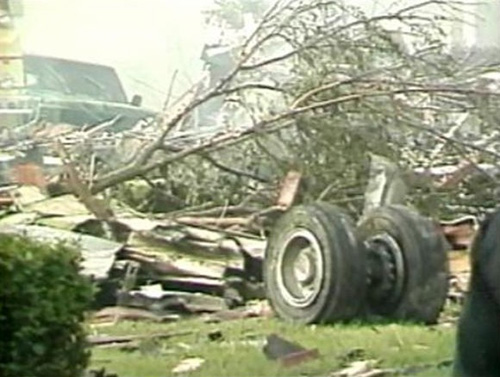



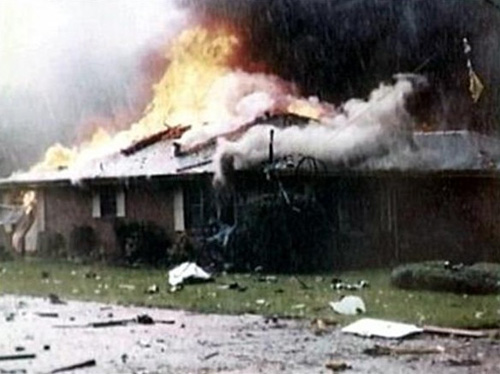
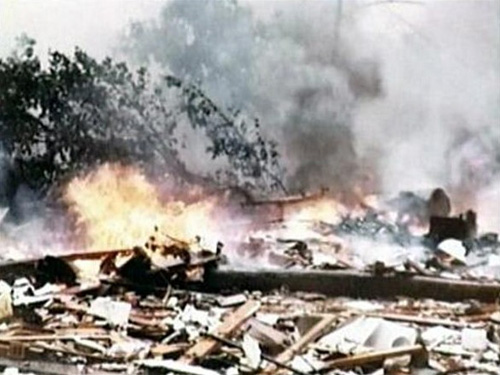
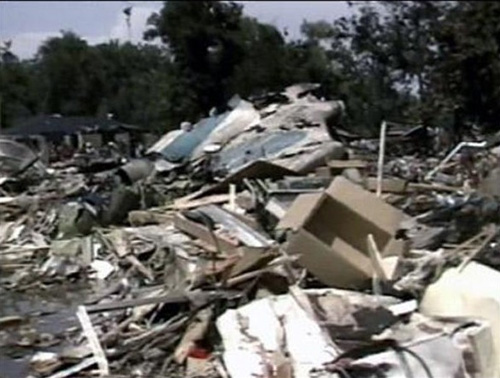
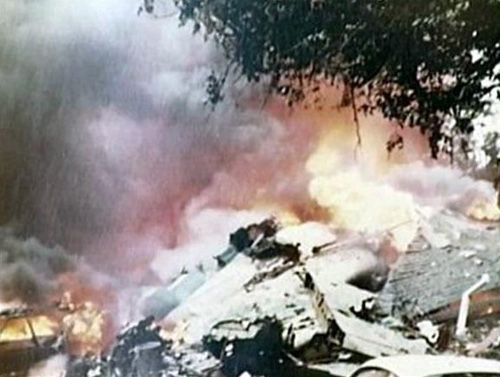
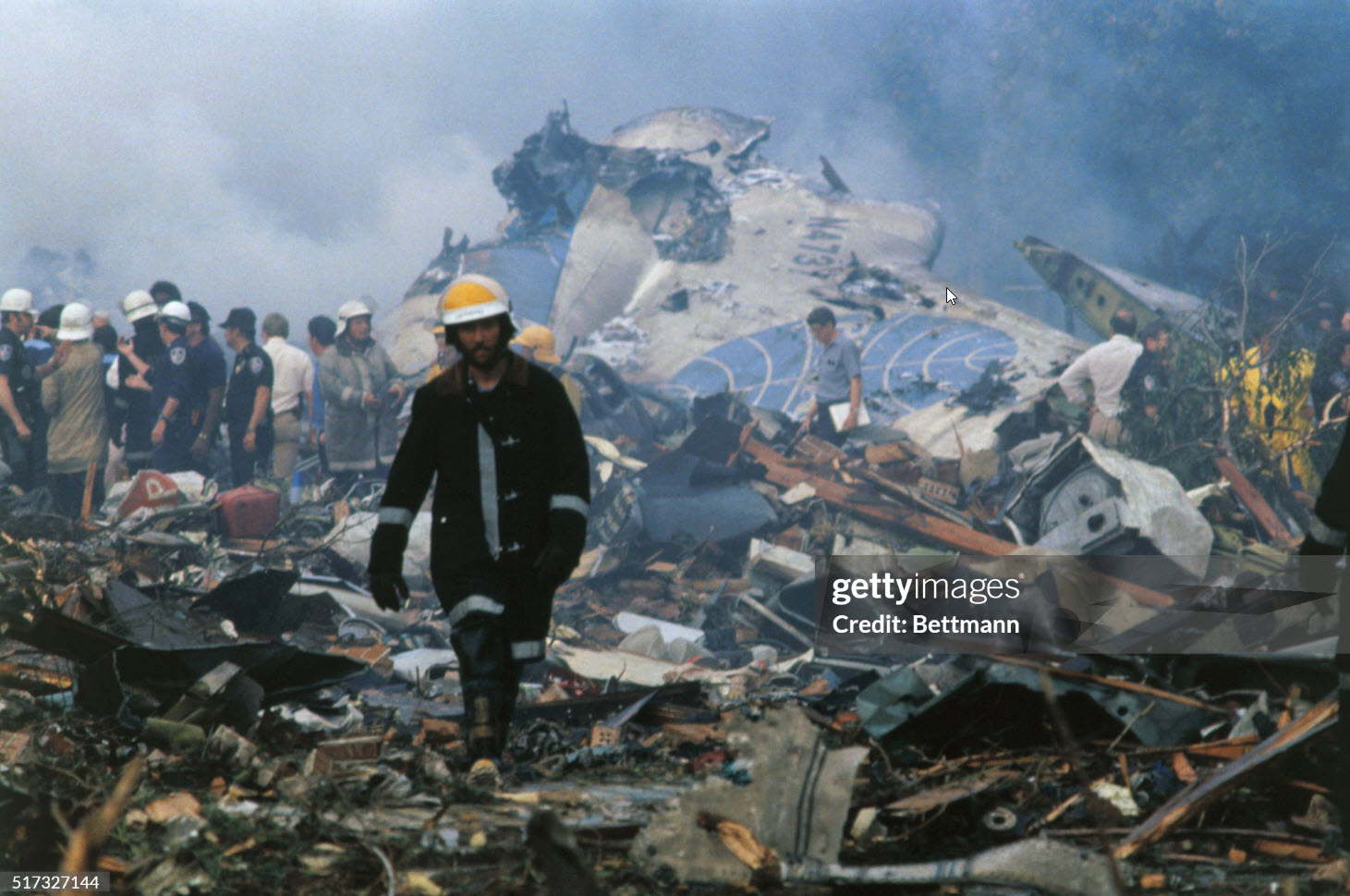
Crash of a Martin 404 in Grand Canyon
Date & Time:
Nov 16, 1979 at 1452 LT
Registration:
N40438
Survivors:
Yes
Schedule:
Grand Canyon - Las Vegas
MSN:
14173
YOM:
1952
Flight number:
KS2504
Crew on board:
3
Crew fatalities:
Pax on board:
41
Pax fatalities:
Other fatalities:
Total fatalities:
0
Captain / Total hours on type:
1500.00
Copilot / Total hours on type:
100
Aircraft flight hours:
30451
Circumstances:
On November 16, 1979, Nevada Airlines, Inc., Flight 2504, a Martin 404 (N40438), was a chartered flight from Las Vegas, Nevada, to Grand Canyon National Park Airport, Tusayan, Arizona, and return. About 0935 / Flight 2504 departed Las Vegas to carry a French tour group to the Grand Canyon for a sightseeing tour. There were 41 passengers and a crew of 3 aboard for the roundtrip. The crew and passengers reported that the trip from Las Vegas to Tusayan was routine. After a scenic flight over the Grand Canyon, a landing was made at Tusayan after about 1 hr 10 min of flight time. No fuel, oil, or antidetonate (ADI) fluid was taken on, and no baggage was placed aboard at Tusayan. Takeoff for the return flight was started at 1450 from runway 3. The copilot was to make the takeoff from the right seat. The weather was clear, visibility unlimited, and winds were from 040° at 15 kns. The crew stated that all pretakeoff checklist items were completed and that the takeoff roll was normal. The captain said that he checked the engine instruments at V speed, takeoff safety speed, as the aircraft was rotated for takeoff and "everything was normal." He said he raised the landing gear and, almost immediately thereafter, sensed a loss of power from the left engine. He said he took control of the aircraft from the copilot and noticed that the left engine autofeather light was illuminated and the feather button depressed. About 1451:20, the tower local controller stated, '...do you want to come back?" The captain-said he told the copilot to advise the tower that the flight had lost an engine and was returning to the airport. At 1451:50, the copilot told the tower, '... we're (sic) lost an engine and we want to come back around." The local controller cleared the aircraft as requested. There was no reply from Flight 2504. The captain stated that he noticed a 200-fpm rate of climb when the aircraft reached the departure end of the runway. He said that after passing the runway the aircraft encountered a downdraft and turbulence which overcame the single engine climb performance of the aircraft. He said that, as the engine failure emergency checklist was being accomplished, he made a slight left turn to avoid a radio tower along the flightpath. The copilot stated that the aircraft passed to the left of and below the top of the tower; the top of the tower is 6,739 feet, about 100 feet above the ground. Even though she was aware of an engine problem, the flight attendant stated that she was not aware that an engine had failed. She said she was not warned by the cockpit crew about the impending crash. The passengers recalled hearing no unusual noises during the takeoff; however, several of them saw the left propeller stop shortly after the aircraft left the ground. Several passengers stated that, once the aircraft was airborne and after the left engine had failed, they experienced a "rocking" movement of the aircraft. One passenger, a pilot who was seated at the front of the cabin, said he was aware that the left propeller had been feathered and that, immediately thereafter, the aircraft began to descend. None of the passengers interviewed, were aware that the aircraft was going to crash until they heard the noise of a tree strike. They said there was no warning given by the crew. Several witnesses on the ground stated that they saw the aircraft flying low with the left propeller stationary. Some reported that the landing gear was up. No witnesses reported smoke, fire, or any other problems with the aircraft before impact. The airport tower personnel stated that they saw the left propeller stop when the aircraft was abeam of their position in the tower and slightly below the top of the tower. The tower is located about 6,000 ft from the beginning of Flight 2504's takeoff roll. Tower personnel stated that the aircraft never climbed over 100 ft above the ground level. They said the aircraft banked slightly to the left and descended into the trees. They activated the crash notification circuit when they realized an accident was inevitable. The captain stated that he "was making it except for the downdrafts," and he noticed that the airspeed had decreased to 105 knots; V2 was about 101,5 knots. He said that when he saw that the temperature of the right engine cylinder head was rising rapidly toward the maximum limit, he reduced the manifold pressure about 2 inHg to avoid engine failure. However, he said the inability of the aircraft to climb and the proximity of the terrain required that he return the right engine to full power and select a forced-landing area. The captain stated that, since terrain surrounding the airport was heavily wooded, he headed for the clear area north of the field. He said that when he realized that he would not clear two tall trees before reaching the clear area, he lowered the nose slightly and "flew through the trees." The cockpit struck one of the trees, shattering the captain's windshield. The captain said the aircraft lost about 20 kns of airspeed when it struck the trees and the aircraft began to roll to the left; minimum control speed with the left engine inoperative was about 91 kns. He further reduced the power on the right engine, rolled the wings level, and rotated the aircraft so that it would strike the ground in a nose-high altitude. Both pilots said they hit the ground three times, with each impact becoming progressively more severe. The aircraft came to rest about 850 ft beyond the point where the first trees were struck. The crashpath was oriented on a heading of 355°, and the fuselage came to rest on a heading of 070°. A fire broke out on the right side of the aircraft as it slid to a stop. The fire originated near the cockpit, which had twisted to the left about 120°. Three crew members and seven passengers were seriously injured while 34 other occupants escaped with minor injuries. The aircraft was written off.
Probable cause:
The unwanted autofeather of the left propeller just after take-off and an encounter with turbulence and downdrafts, a combination which exceeded the aircraft's single-engine climb capability which had been degraded by the high density altitude and a turn to avoid an obstacle in the flight path. Also, the available climb margin was reduced by the rising terrain along the flight path. The cause(s) for the unwanted autofeather of the left propeller could not be determined.
Final Report:
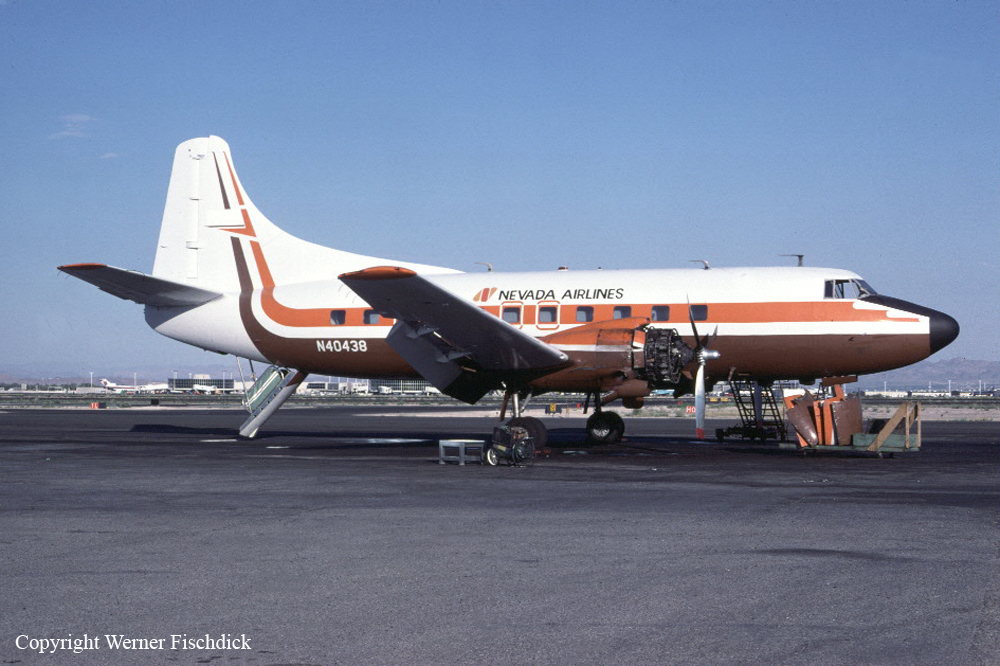
Crash of a Rockwell Grand Commander 680FL in Phoenix
Date & Time:
May 29, 1979 at 1717 LT
Registration:
N783EF
Survivors:
Yes
Schedule:
Las Vegas - Phoenix
MSN:
680-1392-51
YOM:
1964
Crew on board:
2
Crew fatalities:
Pax on board:
0
Pax fatalities:
Other fatalities:
Total fatalities:
0
Captain / Total hours on type:
100.00
Circumstances:
On final approach to Phoenix-Sky Harbor Airport, while completing a cargo flight from Las Vegas, both engines lost power. The crew attempted an emergency landing when the airplane lost height and crashed short of runway threshold. The aircraft was damaged beyond repair and both pilots were seriously injured.
Probable cause:
Controlled collision with ground on final approach after the airplane encountered vortex turbulences. The following contributing factors were reported:
- Fuel starvation,
- Failure of both engines,
- Forced landing off airport on land,
- Violent wingrock on final uncovered fuel sump pickups allowing air to enter fuel lines.
- Fuel starvation,
- Failure of both engines,
- Forced landing off airport on land,
- Violent wingrock on final uncovered fuel sump pickups allowing air to enter fuel lines.
Final Report:
Crash of a Learjet 24D in Las Vegas
Date & Time:
Oct 24, 1978 at 1001 LT
Registration:
N37DH
Survivors:
Yes
Schedule:
Las Vegas - Las Vegas
MSN:
24-231
YOM:
1970
Crew on board:
2
Crew fatalities:
Pax on board:
0
Pax fatalities:
Other fatalities:
Total fatalities:
0
Captain / Total hours on type:
7.00
Circumstances:
The crew was engaged in a local training flight at Las Vegas-McCarran Airport. During the takeoff roll, just after V1 speed, the pilot-in-command started the rotation. The airplane went out of control and crashed in flames. Both pilots escaped with minor injuries while the aircraft was damaged beyond repair.
Probable cause:
Ground loop during takeoff run after the crew failed to follow approved procedures. The following contributing factors were reported:
- Inadequate supervision of flight on part of the check pilot,
- Inadequate training procedures,
- Simulated conditions,
- Premature rotation after V1 speed when engine was cut,
- The pilot-in-command had only one V1 engine cut prior to flight.
- Inadequate supervision of flight on part of the check pilot,
- Inadequate training procedures,
- Simulated conditions,
- Premature rotation after V1 speed when engine was cut,
- The pilot-in-command had only one V1 engine cut prior to flight.
Final Report:
Crash of a Rockwell Aero Commander 500A in Ione: 1 killed
Date & Time:
Mar 22, 1969 at 1839 LT
Registration:
N6145X
Survivors:
Yes
Schedule:
Stockton - Ione - Las Vegas
MSN:
500-921-24
YOM:
1960
Crew on board:
1
Crew fatalities:
Pax on board:
3
Pax fatalities:
Other fatalities:
Total fatalities:
1
Captain / Total hours on type:
39.00
Circumstances:
While taking off from Ione Airfield, the twin engine aircraft encountered difficulties. The pilot failed to abort the takeoff and the rotation was completed too late. The airplane struck a dirt bank then crashed at the end of the runway. The pilot was killed while three passengers were injured. The aircraft was destroyed.
Probable cause:
Poor flight preparation on part of the pilot who failed to follow the pre-departure checklist and failed to realize that the gust locks were engaged.
Final Report:
Crash of a Lockheed L-1649 Starliner in Las Vegas
Date & Time:
Dec 9, 1968 at 1830 LT
Registration:
N7314C
Survivors:
Yes
MSN:
1016
YOM:
1957
Crew on board:
8
Crew fatalities:
Pax on board:
96
Pax fatalities:
Other fatalities:
Total fatalities:
0
Captain / Total hours on type:
1700.00
Circumstances:
After liftoff at McCarran Airport, while in initial climb, the crew raised the landing gear when two engines suffered a simultaneous loss of power. The captain initiated an immediate landing and the airplane belly landed on the runway and slid for few dozen yards before coming to rest. All 104 occupants were evacuated safely while the aircraft was damaged beyond repair.
Probable cause:
The accident was probably caused by the combination of the following factors:
- Aircraft improperly serviced by ground crew,
- Fuel contamination, improper fuel grade,
- Premature liftoff,
- Intentional wheels-up landing,
- Suspected mechanical discrepancy,
- Erroneously serviced with jet fuel,
- Aircraft airborne prior to V2 speed.
- Aircraft improperly serviced by ground crew,
- Fuel contamination, improper fuel grade,
- Premature liftoff,
- Intentional wheels-up landing,
- Suspected mechanical discrepancy,
- Erroneously serviced with jet fuel,
- Aircraft airborne prior to V2 speed.
Final Report:

Crash of a De Havilland DH.104 Dove 6BA in Las Vegas: 4 killed
Date & Time:
Oct 8, 1968 at 0335 LT
Registration:
N4040B
Survivors:
No
MSN:
04328
YOM:
1952
Crew on board:
2
Crew fatalities:
Pax on board:
2
Pax fatalities:
Other fatalities:
Total fatalities:
4
Captain / Total hours on type:
348.00
Circumstances:
Shortly after a night takeoff from Las Vegas-McCarran Airport, while in initial climb, the airplane went out of control and crashed in flames near the runway end. The aircraft was destroyed by impact forces and a post crash fire and all four occupants were killed.
Probable cause:
The exact cause of the accident could not be determined. However, it was reported that the aircraft caught fire during initial climb and crashed following an uncontrolled descent. It is believed that the fire of undetermined origin beneath cockpit floorboard.
Final Report:
Crash of a Rockwell Aero Commander 560 in Las Vegas: 1 killed
Date & Time:
Sep 18, 1966 at 0928 LT
Registration:
N280E
Survivors:
Yes
MSN:
560-207
YOM:
1955
Crew on board:
1
Crew fatalities:
Pax on board:
5
Pax fatalities:
Other fatalities:
Total fatalities:
1
Captain / Total hours on type:
10.00
Circumstances:
Shortly after takeoff from Las Vegas-McCarran Airport, while in initial climb, both engines lost power. The pilot informed ATC and requested permission to return for a safe landing but realized it would not be possible. He raised the undercarriage and attempted a belly landing in an open field. The airplane crash landed near the airport and came to rest. The pilot was killed and all five passengers were seriously injured. The aircraft was destroyed.
Probable cause:
Partial loss of power on both engines due to fuel contamination with water. Inadequate preflight preparation on part of the pilot. The aircraft was improperly loaded as at the time of the accident, it was overloaded by 532 pounds.
Final Report:





